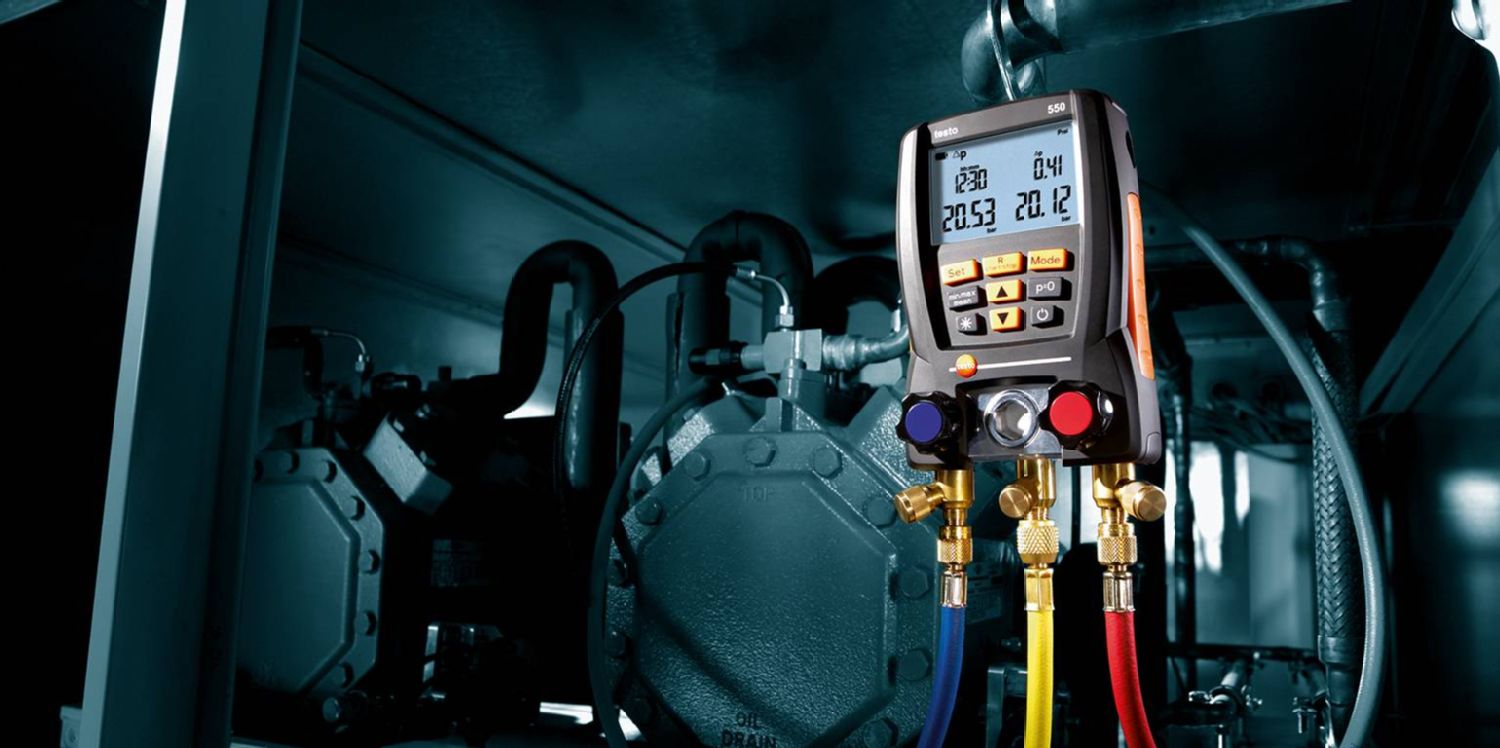
A wide variety of systems that function under pressure rely on gauges to ensure consistent, effective and safe operation. Measuring the pressure in a given system, such as HVAC or refrigeration units, provides key insights into any potential maintenance or repair issues, while also assists in maintaining efficiency.
Vacuum gauges and pressure gauges are similar, but distinct instruments that are used to take measurements using different units and ranges. This post is to help you to learn and understand more about the difference between these two valuable tools.
Vacuum gauges like the Testo 552 are dependable, useful instruments for monitoring and servicing heating and cooling systems.
What is a vacuum gauge and what does it do?
A vacuum gauge measures pressure in a vacuum. Petrodia explained that vacuum gauges are generally used in situations where the pressure in a given system is lower than atmospheric pressure. It should therefore be noted that vacuum gauges generally provide results in terms of a negative number. This is because while the pressure in the system is below ambient pressure, absolute is still positive, as it is above the value or reading provided by an absolute vacuum. Instead of using absolute pressure as a measurement, the majority of vacuum gauges utilise relative pressure.
Vacuum gauges are crucial tools in a number of commercial and industrial applications. Some of these applications include measuring pressure in heat pumps, air conditioning and refrigeration systems. A vacuum gauge is always paired with a vacuum pump, as this creates the vacuum required for the gauge to record a measurement.
Inspection, auditing and safetyPreventative maintenance keeps businesses and the systems they use running smoothly and efficiently. By conducting regular checks, maintenance specialists are able to maintain accurate records of equipment conditions, communicate information to decision-makers effectively and take the lead on support and repair efforts. Vacuum gauges are a key tool in identifying potential issues with equipment early on. This ensures that any problems are addressed safely and thoroughly before larger risks emerge
What is the difference between vacuum gauge and pressure gauge?As established earlier, a vacuum gauge measures negative pressure, at least on a relative scale. It is used when the pressure inside a system is below the surrounding atmospheric pressure. Therefore, a vacuum gauge can be viewed as a specific type of pressure gauge. However, pressure gauges are frequently used to measure key characteristics of various systems operating above the surrounding atmospheric pressure, while vacuum gauges generally do the opposite. This is why at Testo, we separate our vacuum gauge and pressure gauge instruments for ease of identification, making it easier to select the correct solution for your needs.
Your partner for reliable vacuum gaugesTesto offers a wide range of vacuum gauges that are designed to meet the needs of businesses across an array of industries. The Testo 552 combines reliable measurements with simple operation, a digital screen for clear spot on readings and Bluetooth connectivity. The Bluetooth allows for improved functionality as it provides connectivity between the device and Testo Smart Probes app which is available for smartphones and tablets. This means that users can wirelessly monitor pressure during evacuation of heating and cooling systems, as well as share measurement data via email. A rugged construction and the ability to provide precise measurements round out the key features of this instrument.
If you want to learn more about Testo’s range of vacuum gauges and manifolds, get in contact with the Testo NZ team today!
